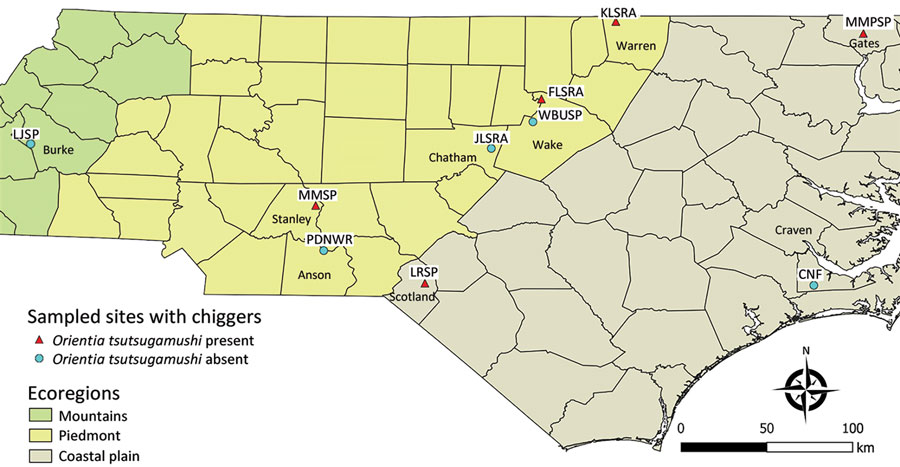Volume 29, Number 8—August 2023
Dispatch
Detection of Orientia spp. Bacteria in Field-Collected Free-Living Eutrombicula Chigger Mites, United States
Figure 1

Figure 1. Study area for investigation of Orientia spp. bacteria in field-collected free-living Eutrombicula chigger mites, North Carolina, USA. Free-living chiggers were collected from 10 sites in 8 counties. CNF, Croatan National Forest; FLSRA, Falls Lake State Recreation Area; JLSRA, Jordan Lake State Recreation Area; KLSRA, Kerr Lake State Recreation Area; LJSP, Lake James State Park; LRSP, Lumber River State Park; MMPSP, Merchant Millpond State Park; MMSP, Morrow Mountain State Park; PDNWR, Pee Dee National Wildlife Refuge; WBUSP, William B. Umstead State Park.
Page created: June 29, 2023
Page updated: July 20, 2023
Page reviewed: July 20, 2023
The conclusions, findings, and opinions expressed by authors contributing to this journal do not necessarily reflect the official position of the U.S. Department of Health and Human Services, the Public Health Service, the Centers for Disease Control and Prevention, or the authors' affiliated institutions. Use of trade names is for identification only and does not imply endorsement by any of the groups named above.